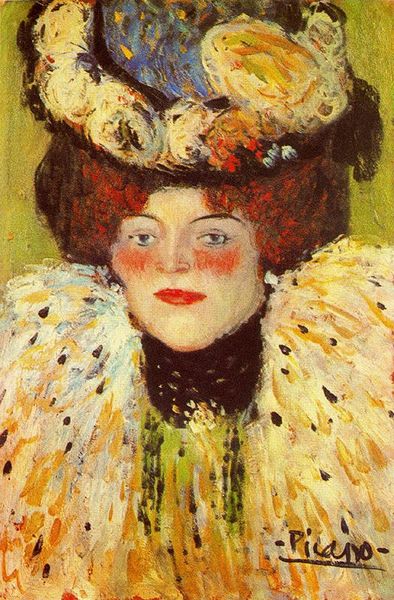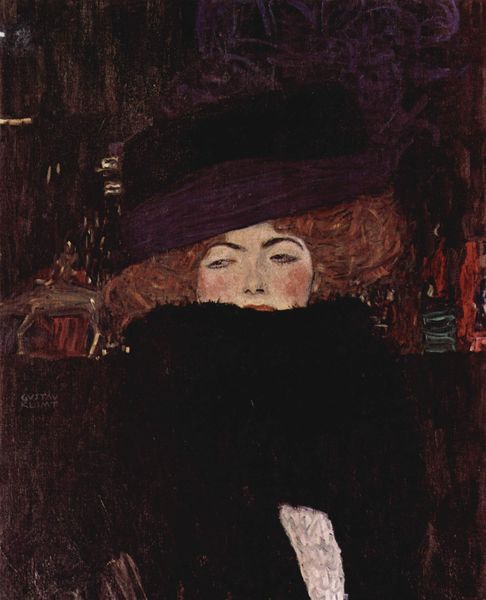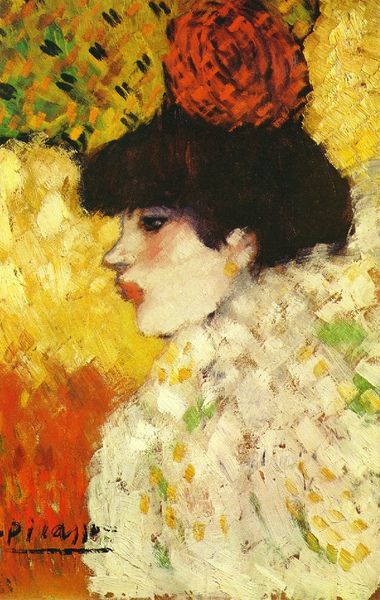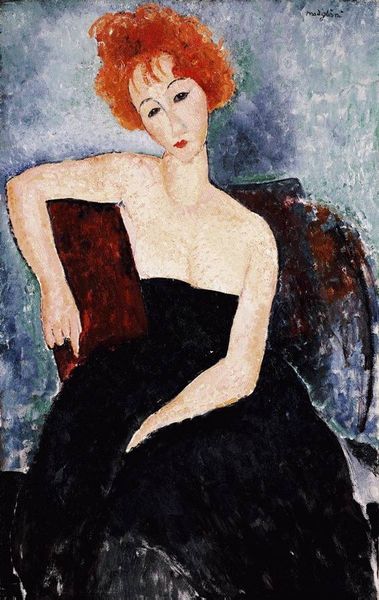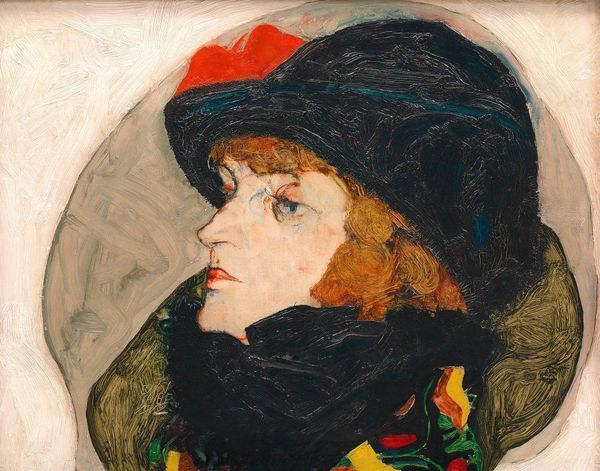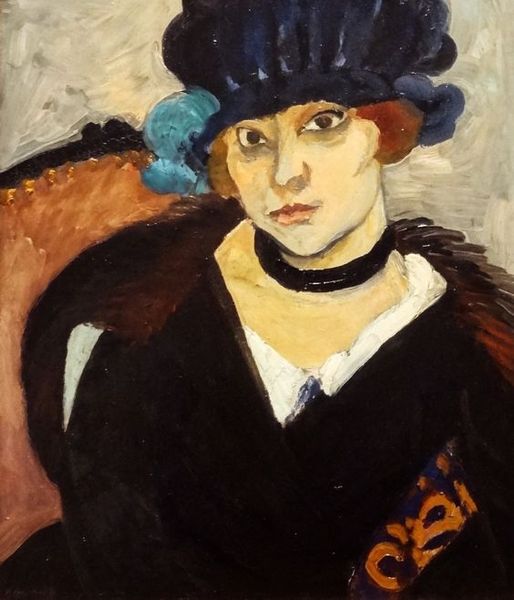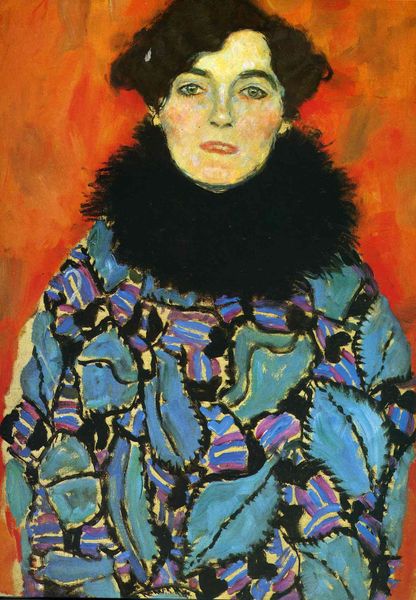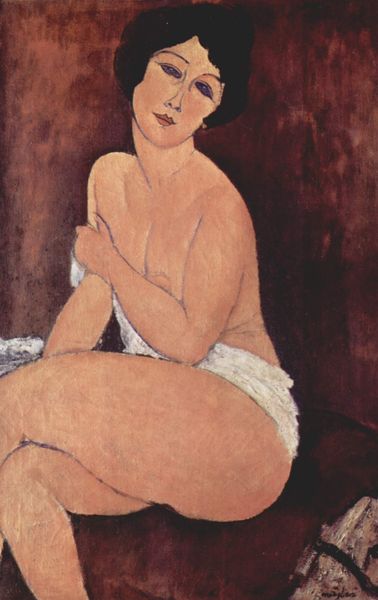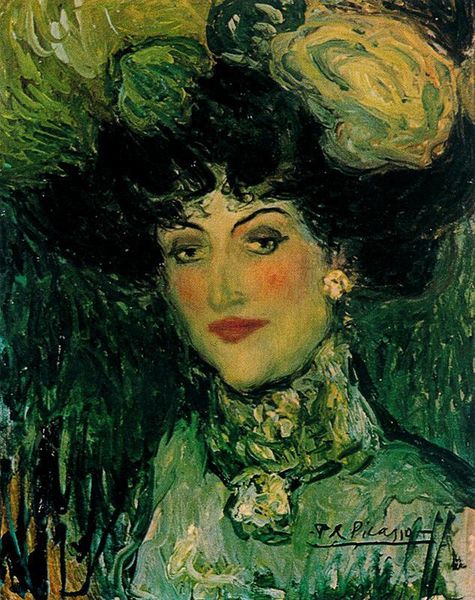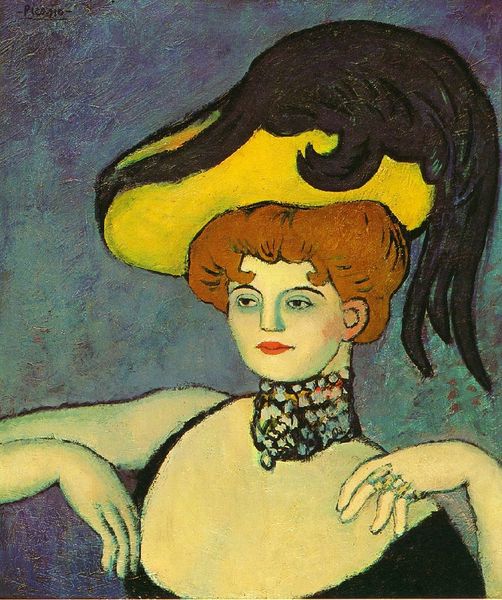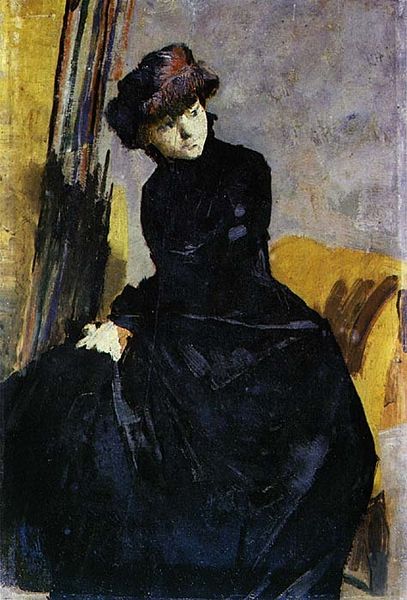
oil-paint
#
portrait
#
art-nouveau
#
oil-paint
#
figuration
#
oil painting
#
intimism
#
symbolism
Copyright: Public domain
Curator: Stepping up to this work, the initial impact for me is the striking stillness in the figure, particularly considering the swirling background. It is called "The Black Feather Hat" painted by Gustav Klimt around 1910. Editor: I find her expression somewhat haunting. Her cool gaze confronts you, as if she knows exactly what you're thinking. It feels like a silent challenge wrapped in Art Nouveau finery. What intrigues you about the piece beyond the initial composition? Curator: I am interested in the production, specifically the texture. The canvas isn't smooth. It is almost raw. And this textural choice makes one consider the means of representation itself. The labour behind portraiture, usually elided by a smooth surface is made evident in the rougher marks left behind on the canvas. This connects back to larger systems of making during the 1910's and Vienna's shifting industrial output. Editor: Ah, the ghosts of labour! It's true; the visible brushstrokes give it an unfinished quality. More like an intimate glimpse rather than a formally posed portrait. What does that heavy, almost aggressively large, black hat say about her status within this nexus of labour, class, and consumerism? Curator: That is very interesting. The hat might symbolize wealth and the fruits of this very labor. While obscuring the figure in shadow, the hat serves as an indicator of her financial independence, built on the industrial advancements made evident in the roughness of the canvas. The black could even signify the exploitation inherent in the working classes. Editor: A fashionable crown of thorns, perhaps. For me, it's also about allure. Her lips are parted, finger resting thoughtfully. She holds secrets. Is the hat a distraction? Does it obscure her inner life or amplify its mysterious depth? She seems less interested in meeting social expectations. She has an interior world. Curator: The conversation surrounding expectations is so intriguing in light of the artist's own controversial artistic trajectory, particularly regarding depictions of women, a rebellion enacted using oils. Thank you for helping clarify this for me. Editor: Likewise! This reminds me that Klimt excelled at making us reconsider beauty, even with darkness around the edges. A fruitful intersection.
Comments
No comments
Be the first to comment and join the conversation on the ultimate creative platform.
